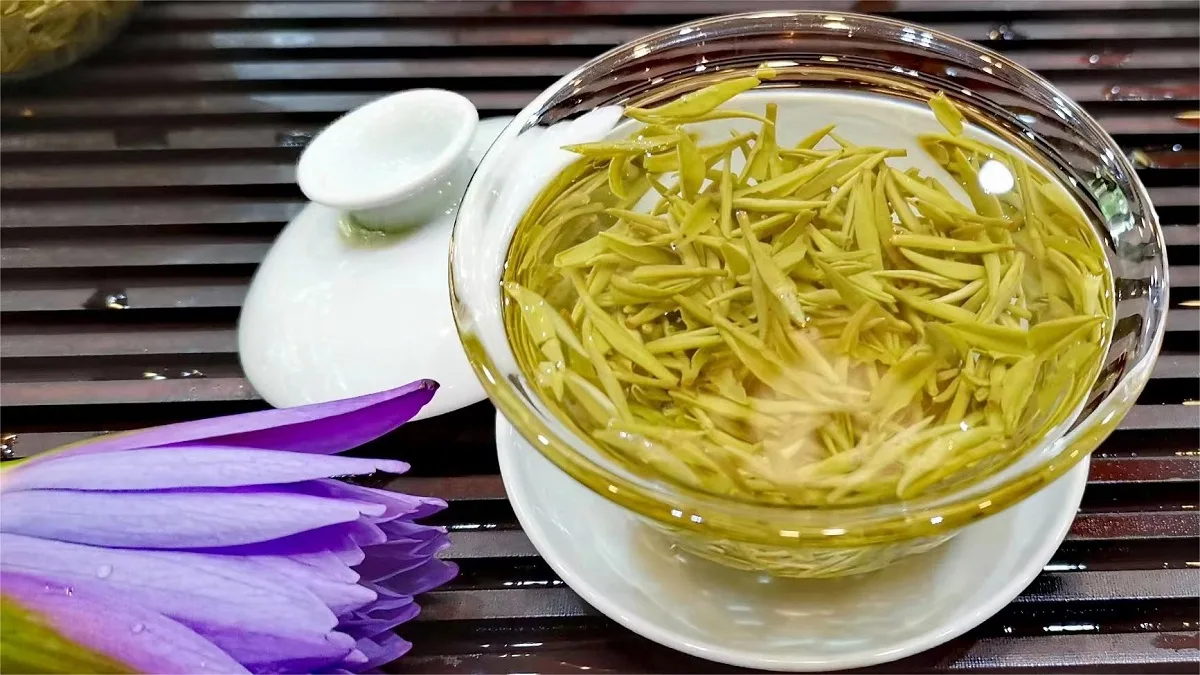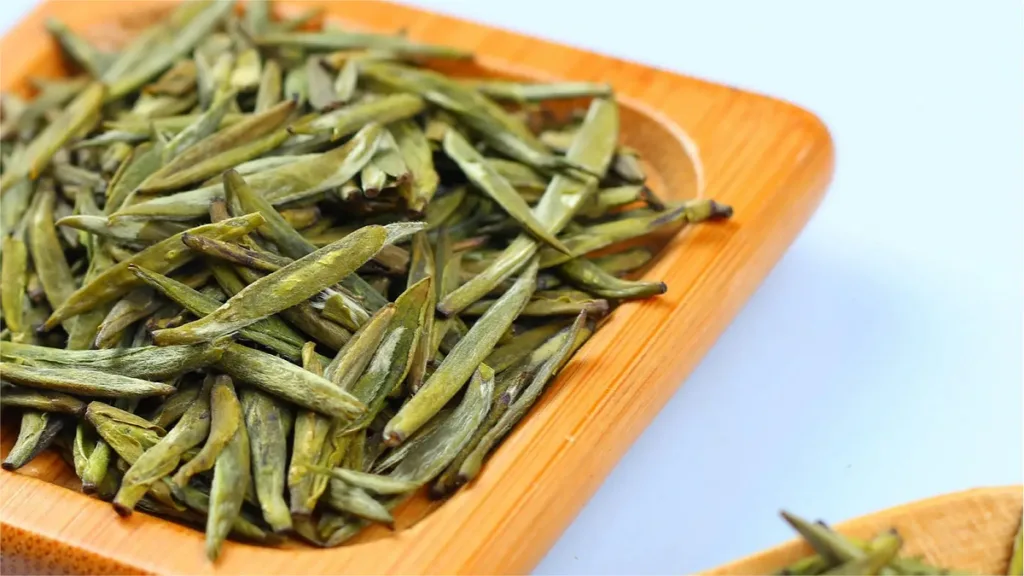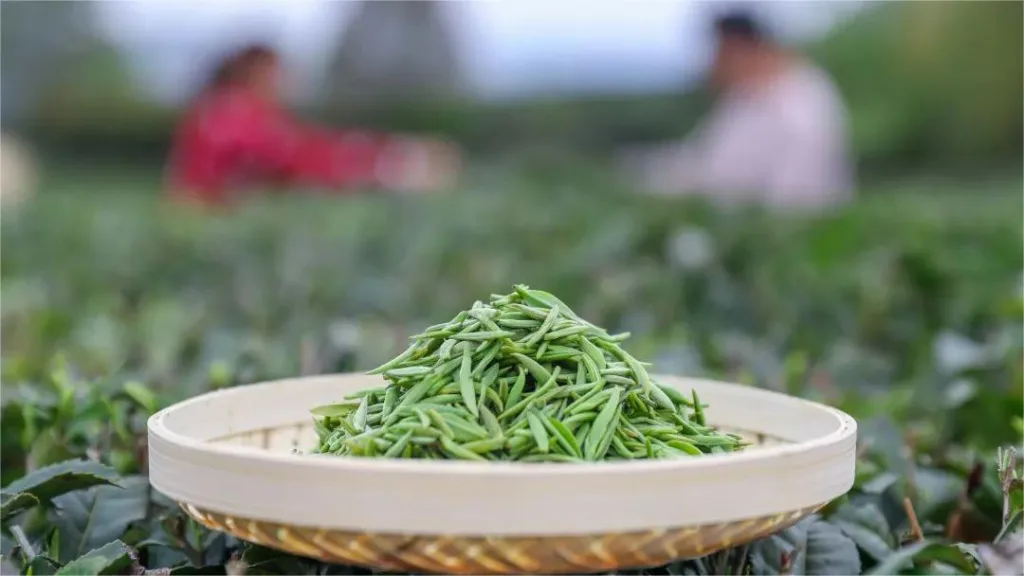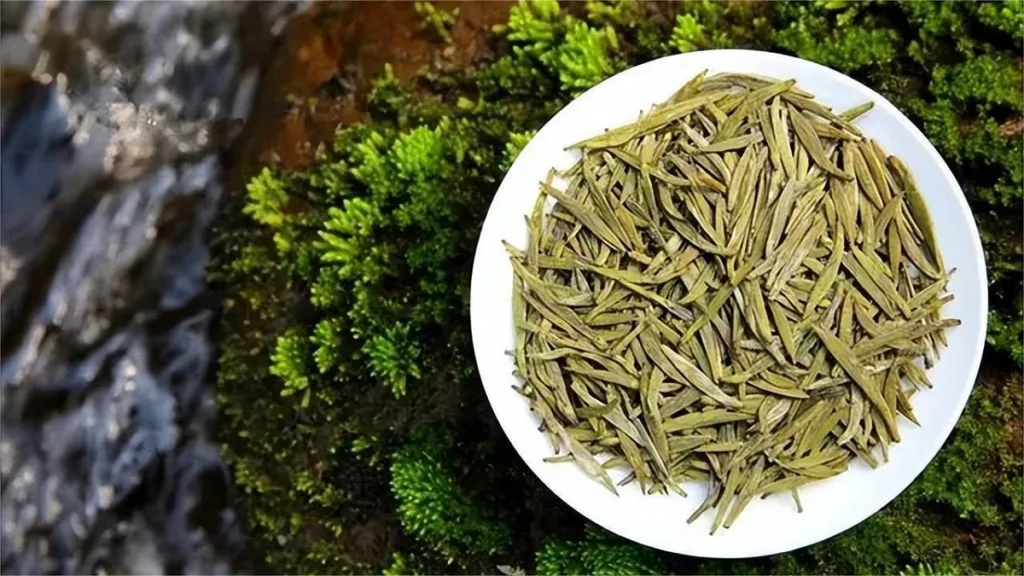Chinese yellow tea, a distinctive specialty of China, encompasses a diverse range of varieties, each distinguished by factors such as the freshness of the leaves and the size of buds. Categorized into Huangya Tea, Huangxia Tea, Huangda Tea, Guizhou Tang Dynasty Ancient Yellow Tea, and more, these teas showcase the rich tapestry of Chinese tea culture. Notable varieties include Junshan Silver Needle, Mengding Yellow Buds, Huoshan Yellow Buds, and Yuan’an Yellow Tea. Meanwhile, teas like Wuyang Maojian, Pingyang Yellow Broth, and Ya’an Yellow Tea fall under the category of Huangxia Tea.
The Three Gorges Reservoir Area, especially in the mist-shrouded mountains of Zigui, has given rise to a unique variant known as Zigui Yellow Tea, also falling within the Huangxia Tea classification. In regions like Anhui’s Jinzhai, Huoshan, Hubei’s Yingshan, and Guangdong’s Daye Qing, Huangda Tea varieties thrive. The hallmark of yellow tea lies in its characteristic “yellow leaves and yellow broth,” a quality that distinguishes it from other types. The city of Yueyang in Hunan is renowned as the hometown of Chinese yellow tea.
Yellow tea undergoes a light fermentation process during its production. The manufacturing process involves steps such as withering, rolling, steaming, and drying, which bear similarities to the methods used in green tea production. However, the crucial step that imparts the distinctive character to yellow tea is the “menhuang” or “sealed yellowing” process. This involves wrapping or covering the tea leaves, allowing them to undergo non-enzymatic oxidation through the action of water vapor. This results in the formation of a unique yellow color, setting yellow tea apart with its nuanced flavor profile and visual appeal.
Manufacturing Process of Chinese Yellow Tea
The production of Chinese yellow tea involves a meticulous process that imparts its unique qualities, characterized by “yellow leaves and yellow broth.” The manufacturing process can be broken down into three main stages: “Kill-green,” “Sealed yellowing” (Meng Huang), and “Drying.”
- Kill-green (Sha Qing): Similar to green tea, the purpose of this stage is to halt the oxidation process and preserve the freshness of the leaves. However, yellow tea demands a distinctive approach in terms of temperature and technique. The kill-green temperature is generally lower than that used for green tea, ranging from 120°C to 150°C. The process involves more steaming and less shaking, creating high-temperature and high-humidity conditions. This environment leads to the destruction of chlorophyll, inactivation of enzymes like polyphenol oxidase and peroxidase, and the oxidation and transformation of polyphenolic compounds, starch, and proteins. These changes lay the foundation for the rich, mellow taste and the characteristic yellow color of yellow tea.
- Sealed Yellowing (Meng Huang): The crucial step in forming the quality of yellow tea is the sealed yellowing process. Depending on the type of yellow tea, this can be categorized into wet-pile yellowing and dry-pile yellowing.
- Wet-pile yellowing: After kill-green or hot rolling, the leaves are piled to induce yellowing. Varieties like Wuyang Maojian and Pingyang Yellow Broth undergo this process, with the leaves’ higher moisture content facilitating rapid changes.
- Dry-pile yellowing: With lower moisture content, varieties like Junshan Silver Needle undergo a slower yellowing process. The leaves are initially dried to a certain extent, followed by a period of 40-48 hours for the color to develop. For Huangda Tea, like Huoshan Yellow Buds, the initial drying is followed by a 5-7 day period of stacking and drying to achieve the desired yellowing.
In essence, regardless of the type of yellow tea or the specific yellowing method employed, this stage is critical for the development of the tea’s unique characteristics.
- Drying: The final stage involves two rounds of drying – one using low heat and the other using high heat. This step is crucial in forming the aromatic profile of yellow tea.
- Low-temperature drying: The leaves, having undergone yellowing, are initially dried at lower temperatures to facilitate slow water evaporation, allowing for the gradual transformation of polyphenolic compounds and chlorophyll. This stage is essential for further enhancing the yellow color and taste.
- High-temperature drying: Following the low-temperature phase, the leaves are subjected to higher temperatures to fix the quality achieved during yellowing. This process also involves the breakdown of ester-type catechins into simpler catechins and gallic acid, contributing to the tea’s richness and taste. The transformation of sugars into caramel and the heat-induced conversion of amino acids into volatile aldehydes are crucial for the development of yellow tea’s distinctive aroma.
Varieties of Chinese Yellow Tea
Junshan Silver Needle
Hailing as the pinnacle of Huangya Tea, Junshan Silver Needle exhibits a robust, straight appearance with silver hairs enveloping the golden buds. Its inner qualities boast freshness and a delicate fragrance, earning it the nickname “gold inlaid with jade.” The brewed tea presents a clear apricot hue, delivering a refreshing and sweet taste with an elegant aroma. Its unique feature is the spectacle when brewed in a glass cup—where the buds stand erect, resembling snowflakes descending before settling at the cup’s bottom.
Huoshan Yellow Buds (Anhui Province)
Considered a treasure among Huangya Tea, Huoshan Yellow Buds originate from Huoshan County in Anhui Province. With a rich history dating back to the Tang Dynasty, this tea has been revered as a premium grade. Freshness is paramount, requiring the buds to be processed on the same day they are plucked. Its distinct characteristics include slender and shiny leaves akin to bird beaks, a tender yellow color, chestnut aroma, a clear yellow-green infusion, a mellow taste with returning sweetness, and a uniformly bright yellow leaf bottom.
Mengding Yellow Buds (Sichuan Province)
Originating from Mengshan County in Sichuan Province, the history of Mengding tea spans centuries, known for its contribution as tribute tea from the Tang Dynasty to the Ming and Qing Dynasties. The processing involves eight steps from plucking to crafting, resulting in a flat-shaped tea with exposed hairy buds. Its attributes include a slightly yellowish hue, a rich sweet fragrance, a bright yellow infusion, and a tender, evenly yellow leaf bottom.
Yellow Small-leaf Teas
This category includes several notable varieties:
- Beigang Maojian (Yueyang, Hunan Province): Renowned since ancient times, Beigang Maojian tea originates from the Yueyang region. Plucked around five to six days after Qingming Festival, this tea consists of one bud and two to three leaves. It is characterized by its beautiful appearance, chestnut aroma, and five graded levels based on leaf quality.
- Weishan Maojian (Ningxiang, Hunan Province): Grown in the Dawei Mountains of Ningxiang County, this tea possesses a unique pine-smoked fragrance alongside characteristics such as slightly curled leaves, a glossy yellow color, a bright orange-yellow infusion, and a bright yellow leaf bottom.
Yellow Big-leaf Teas
This category comprises teas made from one bud and two to three leaves, including:
- Wanxi Yellow Big-leaf Tea (Anhui Province): Notably found in the regions of Huoshan, Jinzhai, Da’an, and Yuexi in Anhui Province, particularly favored from certain areas like Dahua Ping in Huoshan County and Yanzih in Jinzhai County. It is characterized by sturdy stems, well-rolled leaves resembling fish hooks, a golden-brown hue, a rich taste with a lingering charcoal fragrance, and a dark yellow infusion.
- Guangdong Daye Qing (Guangdong Province): Originating from Shaoguan, Zhaoqing, Zhanjiang, and other areas, this tea undergoes a unique processing method involving withering, kill-green, rolling, and piling. It presents a unique appearance with stout, tightly rolled leaves, a distinct greenish-yellow color, a pure aroma, a rich taste with returning sweetness, and a bright yellow leaf bottom.
Guizhou Haima Palace Tea
Produced in Dafang County, Guizhou Province, at the foot of Laoyingyan, Haima Palace Tea is characterized by its small, hairy buds and strong resistance to pests. Harvested around the Grain Rain season, the tea undergoes meticulous processing to yield tightly rolled, curly leaves with visible down. The tea offers a unique combination of tight curls, yellow-green liquor, a sweet and lingering taste, and a tender and even leaf bottom.




